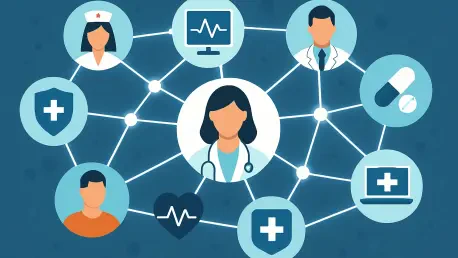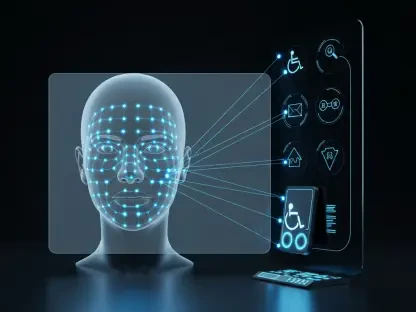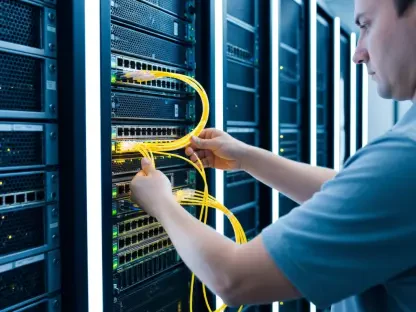What happens when the heartbeat of healthcare isn’t just in the hands of doctors, but in the invisible streams of data pulsing through connected devices and AI systems? Today, a single smart medical device can transmit critical patient information across vast networks in milliseconds, revolutionizing how care is delivered. This digital transformation is no longer a distant vision—it’s the reality shaping hospitals, clinics, and patient outcomes right now, raising urgent questions about the infrastructure that supports it.
The significance of this shift cannot be overstated. Healthcare networks are evolving from simple data pipelines into complex ecosystems that power real-time diagnostics, personalized treatments, and predictive analytics. With billions of data points generated daily, the stakes for reliability, speed, and security are higher than ever. This narrative dives into how AI and connected devices are forcing a radical overhaul of network architecture, exploring the challenges, innovations, and expert insights driving this change.
The Digital Pulse of Healthcare: Why Networks Matter More Than Ever
Modern healthcare hinges on an unseen foundation: the networks that link devices, systems, and professionals across the globe. As connected medical tools—from wearable heart monitors to robotic surgical systems—become commonplace, the demand for seamless data flow has skyrocketed. These networks are no longer just facilitators; they are the backbone ensuring that a patient’s vital signs in a rural clinic reach a specialist hundreds of miles away without delay.
This digital web faces unprecedented pressure to adapt. Hospitals now rely on real-time data for everything from emergency interventions to routine checkups, meaning even a minor network glitch can have life-altering consequences. The integration of AI, which processes massive datasets to predict health risks, adds another layer of complexity, pushing traditional infrastructure to its limits and demanding a complete rethink of how connectivity is managed.
The urgency to evolve is clear when considering the sheer volume of interactions. A single connected device in an intensive care unit can generate thousands of data points per hour, each requiring instant transmission and analysis. This sets the stage for understanding why robust, agile networks are not just a technical necessity but a critical component of patient safety and care quality.
The Stakes of a Connected Healthcare Ecosystem
With every connected device comes a flood of data, and with that, a heightened responsibility to protect it. Healthcare networks today manage everything from electronic health records to live feeds from surgical equipment, making them the nervous system of medical operations. A failure in this system—whether through downtime or a breach—can disrupt entire hospitals, compromise patient privacy, or worse, endanger lives.
The risks are magnified by the sensitive nature of health information. Unlike other industries, a data leak in healthcare doesn’t just mean financial loss; it can violate personal dignity and break trust in institutions. Regulatory frameworks like HIPAA set strict standards for safeguarding this information, placing additional pressure on networks to balance accessibility with ironclad security while handling ever-growing traffic from AI tools and smart devices.
Beyond compliance, the threat of cyberattacks looms large. Hackers increasingly target healthcare systems, knowing the value of medical data on the black market. This reality underscores the need for networks that aren’t just fast or expansive, but fortified against intrusion at every turn, ensuring that innovation doesn’t come at the cost of vulnerability.
Key Ways AI and Connected Devices Are Transforming Networks
The fusion of AI and connected devices is redefining healthcare networks in tangible, groundbreaking ways. One major shift is the data deluge, with devices like smart insulin pumps and remote monitoring tools producing terabytes of information daily. Networks must now offer expanded bandwidth and minimal latency to support real-time processing, ensuring that critical updates aren’t delayed by bottlenecks.
Another game-changer is the adoption of edge computing. By processing data closer to where it’s generated—say, at a bedside monitor rather than a distant server—edge computing slashes delays and reduces strain on central systems. This is vital for time-sensitive applications like emergency alerts, where every second counts in delivering actionable insights to medical staff.
Security remains a cornerstone of this transformation, as health data’s sensitivity makes it a prime target. Networks must embed robust defenses at every layer, from access points to storage, to comply with laws and thwart breaches. Meanwhile, AI-driven workloads, such as predictive models for disease outbreaks, demand infrastructure capable of handling complex computations. Market projections estimate the AI healthcare sector could reach $19 billion by 2027, highlighting the scale of this network evolution.
Expert Voices on the Network Evolution
Industry leaders provide critical clarity on how networks must adapt to this technological wave. Vikas Butaney, senior vice president at Cisco, notes that modern healthcare demands networks with “higher data volumes, expanded bandwidth, and lower latency” to support the surge of AI and connected devices. His perspective emphasizes that without such advancements, the full potential of digital health tools remains untapped.
Butaney also points to edge computing as a pivotal innovation, enabling “machine-speed” data processing for faster clinical decisions. This capability is essential in scenarios like remote surgeries, where split-second responses can determine outcomes. His insights highlight a broader industry push toward infrastructure that prioritizes both speed and proximity in data handling.
Supporting this view, GlobalData reports project cybersecurity spending in healthcare to climb to $10.9 billion with a 12.5% annual growth rate starting from 2025. This statistic reflects a shared recognition of the dual need for innovation and protection. Together, these expert and data-driven perspectives paint a picture of an industry at a crossroads, balancing cutting-edge advancements with the imperative to shield sensitive information.
Strategies for Building Future-Ready Healthcare Networks
Healthcare providers and IT leaders face the daunting task of preparing networks for an AI-driven, connected future, but actionable steps can guide this transition. Investing in scalable infrastructure is paramount, ensuring systems can handle escalating data loads and integrate emerging technologies without constant overhauls. This flexibility allows organizations to stay ahead of demand curves without sacrificing performance.
Adopting edge computing solutions offers another practical path forward, minimizing latency and enabling real-time insights directly at the point of care. This approach proves especially crucial in critical settings like emergency rooms, where immediate data analysis can inform life-saving decisions. Additionally, embedding multi-layered security across access, storage, and transmission points ensures compliance with regulations and guards against breaches in an increasingly hostile digital landscape.
Leveraging AI itself to optimize networks presents a forward-thinking strategy. Tools powered by artificial intelligence can monitor traffic patterns, predict potential bottlenecks, and enhance efficiency proactively, creating self-sustaining systems. These combined efforts provide a roadmap for transforming networks into not just supportive frameworks, but active drivers of improved healthcare delivery and patient outcomes.
Final Reflections
Looking back, the journey of integrating AI and connected devices into healthcare networks revealed a profound shift in how medical care was conceptualized and delivered. The challenges of data overload, security threats, and latency demands spurred innovations that redefined infrastructure as a cornerstone of health systems. Each advancement, from edge computing to AI-optimized traffic management, marked a step toward more responsive, reliable care.
The path forward required sustained commitment from healthcare leaders to prioritize scalable, secure networks as essential investments. Collaborating with technology experts to implement edge solutions and robust defenses became a non-negotiable focus. This ensured that the benefits of digital tools were harnessed without compromising patient trust or safety.
Ultimately, the evolution of healthcare networks stood as a testament to adaptability in the face of complexity. The next steps involved continuous evaluation of emerging technologies and threats, ensuring that infrastructure kept pace with innovation. By embracing these strategies, the healthcare sector positioned itself to deliver on the promise of a truly connected, intelligent future for patient care.









